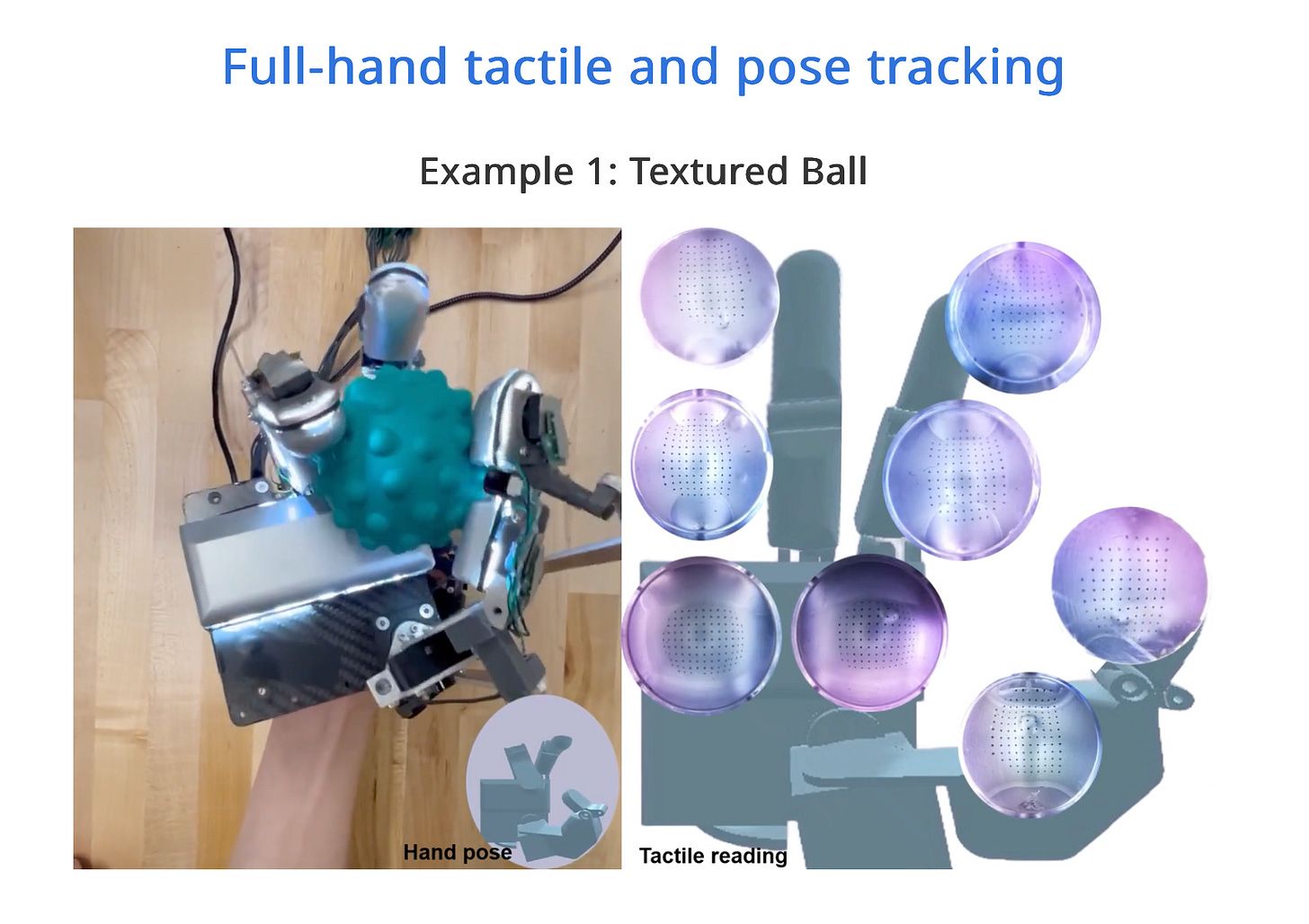Breaking the Bottleneck | Issue 94
[9/22/2025] DEXOP's Impact on Manipulation, Figure's VLA Updates, Industrial AI Unpacked & More!
Breaking the Bottleneck is a weekly manufacturing technology newsletter with perspectives, interviews, news, funding announcements, manufacturing market maps, 2025 predictions, and more!
💥 If you are building, operating, or investing in manufacturing, supply chain, or robots, please reach out - aditya@machinafactory.org. I’d love to chat!
🏭 If you were forwarded this and found it interesting, please sign up!
Content I Enjoyed Last Week 🗞️🔬 📚
One Big Thing:
A new paper on robotic data collection that sensorizes and records human manipulation while maximizing the transferability of the data to real robots. DEXOP is an exoskeleton designed to capture rich force interactions and provide visual feedback as humans perform everyday tasks. This is significant for a few reasons. First, the approach yields significantly better performance per unit time than those from teleoperation. Next, the system supports collection in diverse, natural settings and is easily adaptable to different robotic hand models, broadening both research and real-world applications. Finally, by solving the “data embodiment” and “feedback” problems in dexterous manipulation learning, Dexop paves the way for robots that can learn from richer, more human-like demonstrations.
Dexop stands out because it unifies intuitive human demonstration, rich sensor datasets, and direct applicability to robotic hands, all of which are crucial for the next leap in the applicability of humanoids and their deployment success.
Other Reads:
Nvidia is investing $5 billion into Intel to design custom CPUs that will be easily integrated with Nvidia’s chips and other equipment in both data centers and personal computers. [WSJ]
Seventy-seven % of manufacturers plan to increase their AI spending across various use cases. Bausch + Lomb deployed Arena AI’s Atlas, a predictive-maintenance platform, to unlock “millions” of extra lenses. Spot & Tango automated 60% of purchase orders via Didero without new hires, and FranklinWH’s new California plant is using AI vision to catch battery defects before they happen.
OpenAI is hiring researchers to work specifically on humanoid robots, or robots with a partial or complete human form. Chengshu Li joined OpenAI in June 2025 from Stanford University, where he worked on several robotics projects, including the development of a benchmark designed to measure the abilities of humanoid robots capable of performing a wide range of household chores. [Wired]
Octave, the proposed software spin-off from Hexagon AB, is anticipated to include Hexagon’s Asset Lifecycle Intelligence and Safety, Infrastructure & Geospatial divisions, along with ETQ (from the Manufacturing Intelligence division) and Bricsys, creating one of the world’s leading pureplay software companies. [Industrial Cyber]
Apple joins Samsung and Google in managing heat in iPhones with vapor chambers. These are hermetically sealed chambers with a drop of water inside that cycles between liquid and gas to help dissipate heat. [IEEE Spectrum]
The Trump administration is exploring using money from a $550 billion investment fund established as part of trade negotiations with Japan to invest in the development of semiconductors, pharmaceuticals, critical minerals, energy, ships, and quantum computing. [WSJ]
Products and Announcements:
Figure unveiled two big upgrades to its Helix vision-language-action model. First, Project Go-Big, a partnership with Brookfield to build an internet-scale humanoid pretraining set from egocentric human video captured across 100,000 residences and 160 million square ft of logistics space. Second, zero-shot human-video-to-robot transfer trained solely on everyday, first-person human footage. Now, natural-language commands like “go to the fridge” are output to a single unified network of both dexterous manipulation and navigation, mapping pixels and language to low-level controls. [Figure]
ABB will collaborate with LandingAI, integrating its software, LandingLens, directly into ABB Robotics’ own software suite. It is intended to make robot vision AI training and deployment faster, more intuitive, and accessible to a wider range of users. [The Robot Report]
Drafter launched the definitive Sheet Metal DFM guide covering typical sheet metal processes, K-Factor, and how to calculate bend sizes, Rules for cuts, bend reliefs, and hole sizing, stiffening, grain direction, and more. [Drafter]
Carbon Six launched the industry-first standardized toolkit based on robot imitation learning. SigmaKit enables manufacturers to implement AI-powered robotics without requiring specialized expertise or additional equipment. [Carbon Six Robotics]
Symphony AI announced its IRIS Foundry for Microsoft Teams, integrating industrial AI directly into Microsoft Teams and Microsoft 365 Copilot via the Model Context Protocol (MCP). [Symphony AI]
Machina Labs announced it has been awarded a contract from the U.S. Air Force Research Laboratory (AFRL) in partnership with the Advanced Robotics for Manufacturing (ARM) Institute. [Machina Labs]
Lear Corp. will utilize Palantir’s “Warp Speed” manufacturing operating system and Artificial Intelligence Platform across global manufacturing operations as part of a five-year partnership. [Lear]
Arc Impact will combine DM’s core binder jet metal and ceramic 3D printing technologies with Adaptive3D’s polymer materials and next-gen AI tools to address critical supply chain gaps. [3DPrint.com]
Blogs:
Industrial AI Unpacked [
]Arm’s Chief Architect on the History of Arm Architecture [
at Chip Letter]Finance & Transactions 💵
Figure - A company building general purpose humanoid robots.
$1 billion [Series C] - Led by Parkway Venture Capital and joined by Brookfield Asset Management, Nvidia, Macquarie Capital, Intel Capital, Align Ventures, Tamarack Global, LG Technology Ventures, and others.
Dyna Robotics - A company building general-purpose robots that power the future of the physical economy.
$120 million [Series A] - Led by Robostrategy, CRV, and First Round Capital, and joined by Salesforce Ventures, NVentures, and Amazon Industrial Innovation Fund.
Atomic Industries - A company leveraging AI and robotics to automate tool and die making.
$25 million [Series A] - Led by MaC Venture Capital and DTX Ventures
Feelit - A company building a predictive and condition based maintenance platform.
$8.3 million [Seed] - Led by and joined by
XL Batteries - A company building a grid-scale Organic Flow Battery to provide utility-scale energy storage.
$7.5 million [Seed] - From Merrin Investors
Planned Downtime 🧑🔧
Meta’s Smart Glasses [Marques Brownlee]






Thx for the mention!